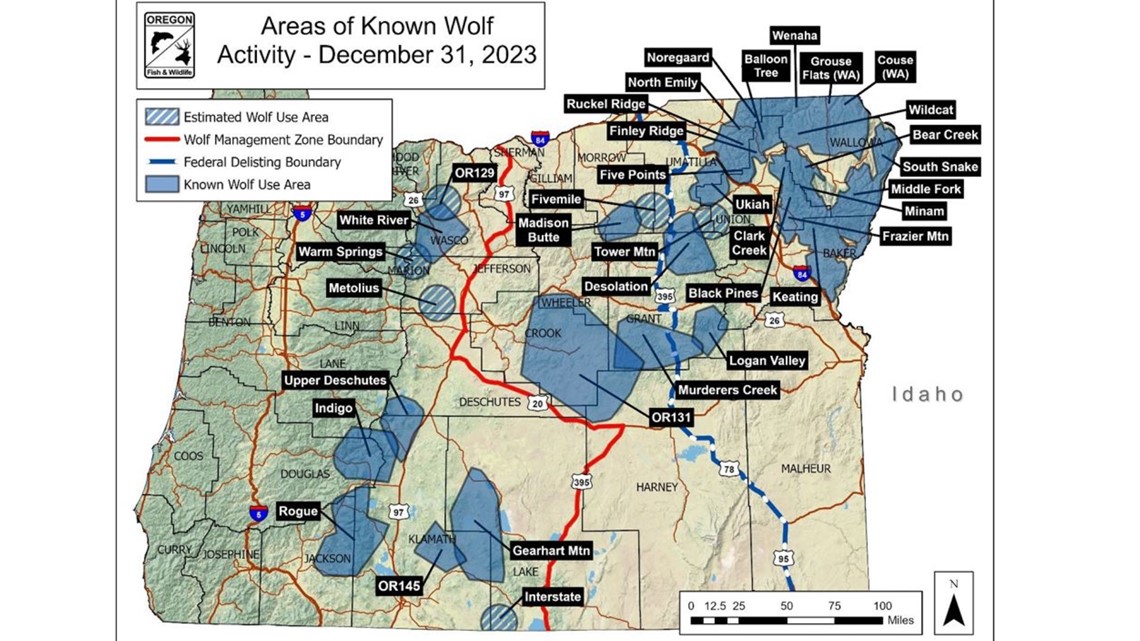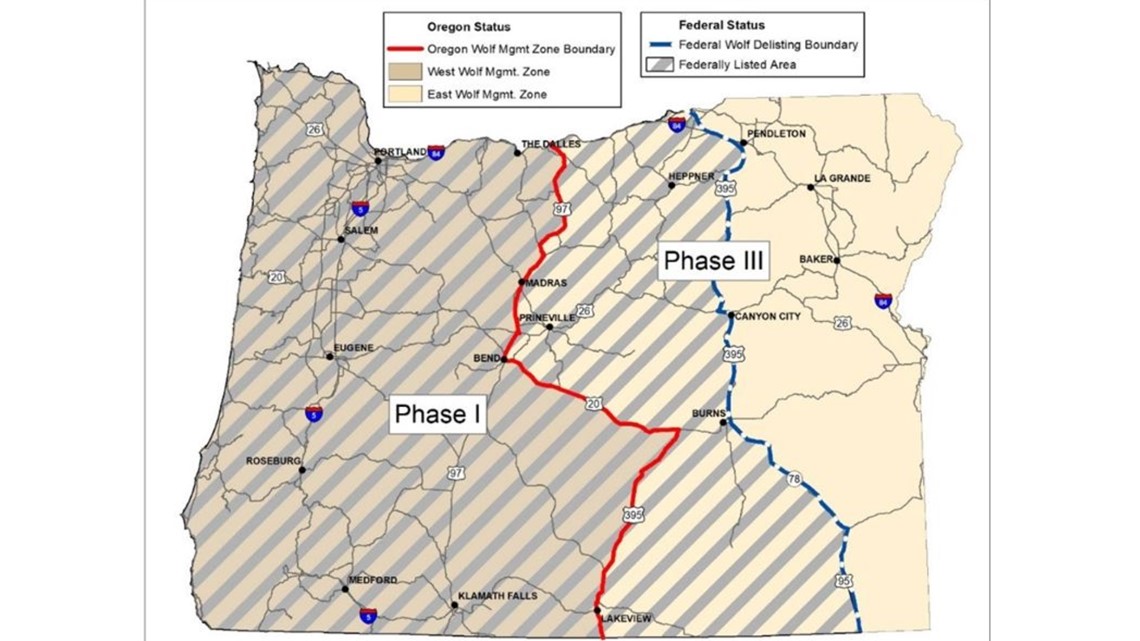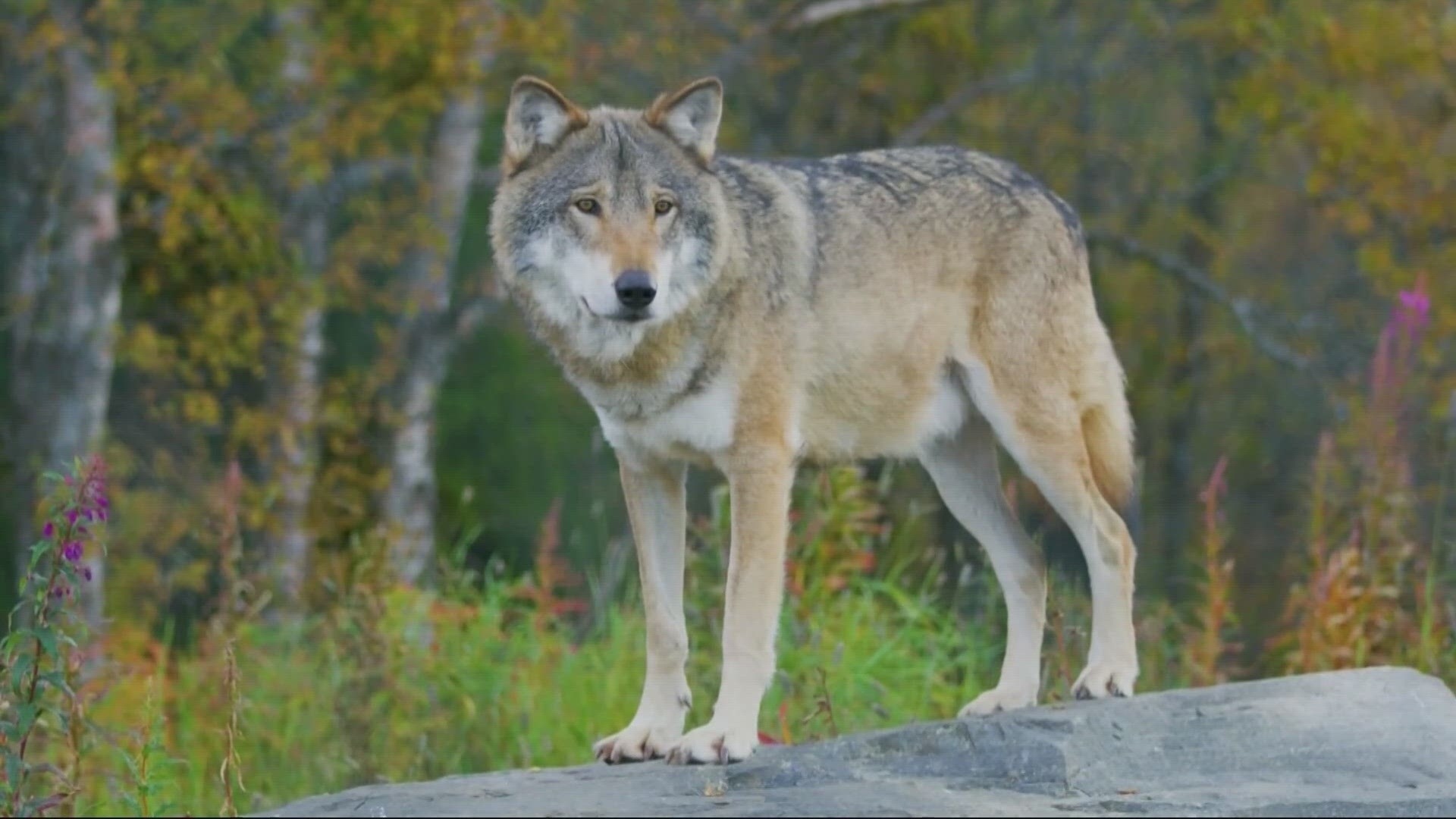PORTLAND, Ore. — Oregon's overall gray wolf population remained essentially unchanged in 2023, according to an annual report from the Oregon Department of Fish and Wildlife (ODFW), and the western population continued to expand its territory despite the loss of a breeding pair in December.
The statewide "minimum known count" at the end of 2023 was 178 wolves, the same as it was at the end of 2022, although the 2023 count excludes 10 wolves that were moved to Colorado. The actual population is higher than the minimum count, the report notes — the count is the number of wolves that were verified through tracks, photos or radio collars.


There was a total of 22 packs statewide at the end of last year, 15 of which were breeding pairs. The majority are in the eastern half of the state; the western half had four breeding pairs until one of the breeding females and three males were found dead near Klamath Falls. The U.S. Fish and Wildlife Service announced that it would offer a $50,000 reward for information that leads to an arrest or conviction in connection with the deaths.
There was a total of 36 wolf deaths in Oregon last year, 33 of which were human-caused. That's up from 24 deaths in 2022, 17 of which were human-caused. Sixteen of last year's deaths were in response to chronic predation of livestock, four were caused by car accidents and one was a shooting in self-defense. The remaining 12 are under investigation by Oregon State Police; several were poisoned.
"These results are exactly what we've been anticipating because of how many wolves the agency has been killing and for the increased level of illegal wolf killing that we've been seeing in tandem with the agency wolf-killing," said Amaroq Weiss with the Center for Biological Diversity. "Wolves may be a resilient species, but they can't take that much mortality."


Critics of wolf reintroduction argue that the presence of wolves is causing extreme stress, not to mention economic hardship, for ranchers.
Oregon's wolf reintroduction plan establishes three phases based on the total population of wolves in each region, with different rules for each phase; later phases give officials and residents more flexibility to resolve problems like livestock predation, including both non-lethal and lethal options if necessary.
The eastern region is in Phase III, but the loss of the breeding pair near Klamath Falls means the western region will stay in Phase I until at least 2027, according to the report; moving to Phase II requires a region to have at least four breeding pairs for three consecutive years.
"It's really, really clear that the way we're implementing things on the ground right now isn't working, because it's sending Oregon's wolf population into a flatline," said Weiss.

